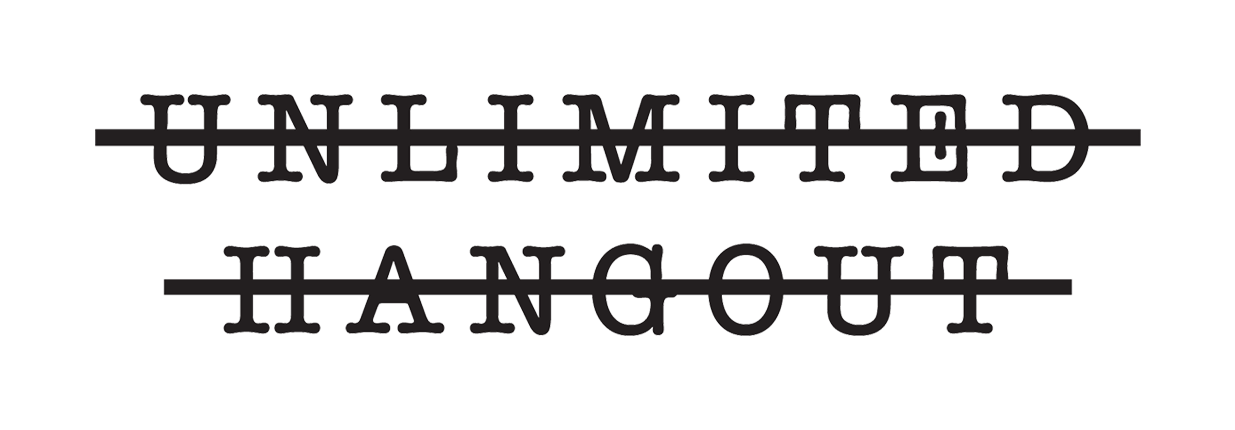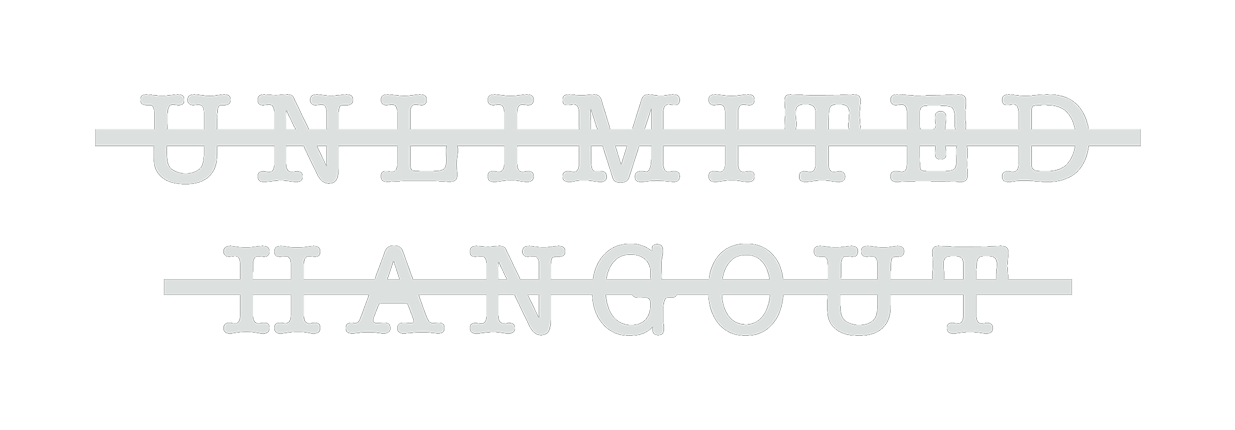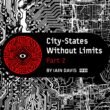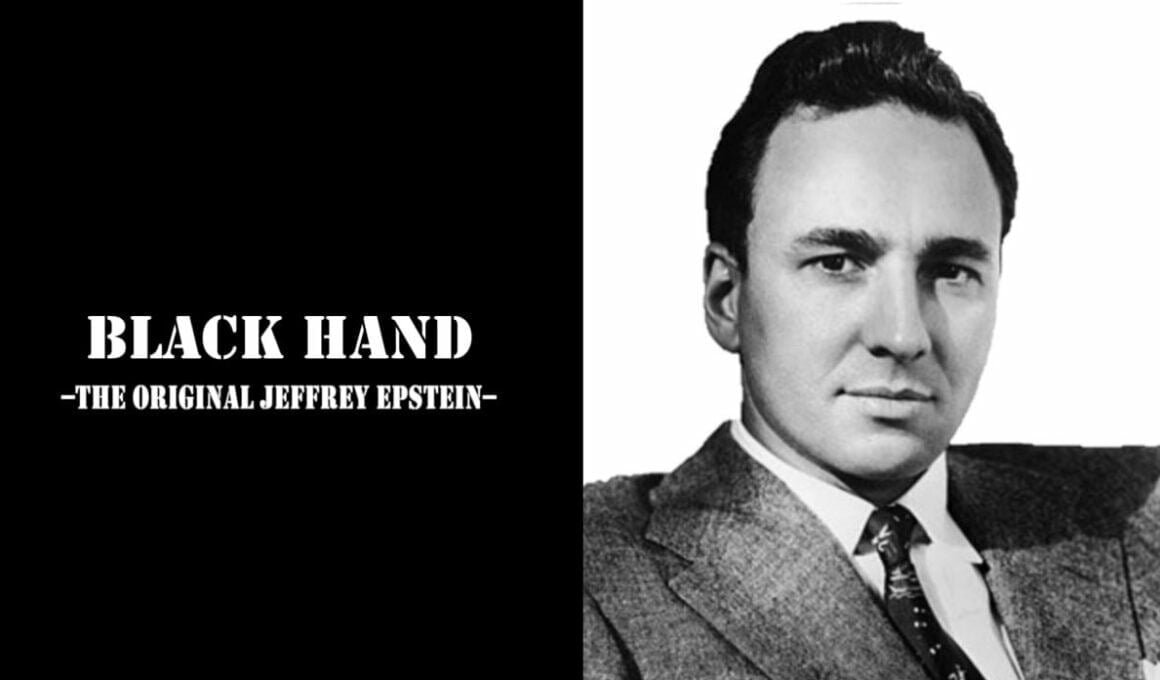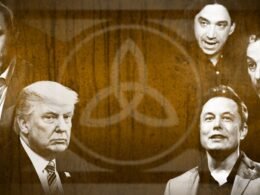There was once a wealthy billionaire philanthropist who owned houses in Palm Beach, New York, and France, as well as a Caribbean Island paradise where he hosted young girls for elite sex parties, far away from prying eyes. Like the infamous paedophile people trafficker Jeffrey Epstein, this Harvard graduate sent his employees into the streets to recruit young girls for him to coerce and molest. One such employee, Stephen Ward, a man who played a central role in the downfall of the British government in the early 60s, reportedly recruited girls from the streets of London for this wealthy man, and even drew him a sketch of a young girl being pleasured by machines in peculiar ways. Also, like Epstein, this wealthy paedophile had significant intelligence ties which ensured he was protected from prosecution. The person I speak of was richer than Epstein and had more properties than Epstein; yet, unlike Epstein he was never caught, charged or prosecuted for any of his crimes, eventually dying of old age in his late nineties.
This is the story of George Huntington Hartford II, a friend of Hod Dibben and Stephen Ward, and a billionaire who was closely related to the intelligence-linked propaganda creators who were behind the invention of James Bond.
George Huntington Hartford II – The Original Jeffrey Epstein

Sitting at a table at Esmeralda Gullan’s Montrose Club one evening in the mid-1950s was a young actress who went by the name Marjorie Steele. She wasn’t just an actress, she was also a master forger who, on the night in question, was reportedly competing with the artist Pietro Annigoni to see who could best reproduce her husband’s signature. Steele was her stage name, with her married name being Huntington Hartford. Marjorie had married into a very wealthy family: her husband was George Huntington Hartford II, who was born on 18 April 1911 in New York City and had inherited his vast wealth from his grandfather, George Huntington Hartford I. When Huntington Hartford was just 6 years old he began receiving an annual income of $1.5 million. His grandfather had created the concept of chain grocery stores after taking over the Great Atlantic and Pacific Tea Company (A&P) and had amassed a great fortune. Huntington Hartford II’s father, Edward, was not as interested as his brothers in the creation of excessive wealth and slowly distanced himself from the wider family, once declaring that at least “one Hartford ought to be a gentleman.” George’s mother, Henrietta, was also unlike the rest of the family and this led to a persisting rift. Edward’s brothers had refused to help their sibling financially, and eventually Edward went so far as to break off contact with them. Edward would also do the same with his own children before his death in 1922. Josephine Bryce, George’s sister, said before her death in 1992, “I don’t think Hunt ever saw him at all.” If the absence of his father wasn’t bad enough for George, his mother also negatively impacted his psychological development.
Henrietta Huntington Hartford was a domineering mother and George was her favourite child. He became the focus of most of her attention, and his sister later described her mother as smothering him in “a cocoon of mother [sic] love.” In a lengthy article published in Vanity Fair on the life of George Huntington Hartford entitled “Hostage to Fortune” on 12 June 2010, it was said that Henrietta would still lean across the dinner table when George was a teenager to cut his meat for him. That article, which contained quotes from a dishevelled 93-year-old George Huntington Hartford, also notes that he “scowled” at the memory of his mother, telling the reporter, “She was domineering, very domineering.” She sent Hartford away to school at St. Paul’s in New Hampshire where George was reportedly bullied constantly by the other students for being from “new money.” He stated, “I was very innocent, 12 years old, and I was sent to a very horrible place. My mother should never had done it.” While making the latter statement, Huntington Hartford is also noted as having raised his voice in distress at the memory. It was very clear from the early life of George Huntington Hartford II that his development had been stunted in many ways by the absence of his father and the overbearing nature of his mother. It is also very clear from his later life that he had kept much of that hatred and anger for his family hidden inside.

In 1931 Huntington Hartford eloped with his first wife, Mary Lee Epling, the daughter of a dentist from West Virginia, a decision which apparently caused his mother to throw herself onto the floor and weep. The pair were regularly found mingling with other members of American high society, but the marriage came to an early end in 1939 after his wife left him for the actor, Douglas Fairbank Jr. This was mainly due to Huntington Hartford chasing skirt, but also because he had impregnated a 23-year-old chorus girl named Mary Barton. Unfortunately for Mary Lee Epling, Douglas Fairbank Jr. himself was a notorious rascal and would become a future attendee of Horace Dibben’s elite sex parties. Huntington Hartford had reportedly “floated the idea” of his mother adopting Mary Lee Epling so that he “might keep her as a sister after their divorce.”

Huntington Hartford graduated from Harvard University in 1934, where he studied English literature. Only a couple of years after graduation he bought a sailing ship named The Joseph Conrad, a rare square-rigger sailboat that he had purchased from famed writer and adventurer Alan Villiers. Huntington Hartford soon became an avid sailor, taking part in ocean races such as the one reported on 28 August 1937, an event where he and Walter S. Gubelmann raced from Newport, Rhode Island, to the Bahamas.
After graduating from Harvard, Huntington Hartford went to work for his uncles at A&P’s company headquarters. However, his uncles were apparently keen to make George’s entry into the family business difficult. They put him in the statistical department of the company where he oversaw the tracking of the sale of bread and pound cake. Quickly becoming disenchanted with the experience, George took a day off to attend the Harvard/Yale football game. His alma matter lost and George Huntington Hartford also lost his position within the family firm. By 1942, Huntington Hartford was investing in property in Santa Monica, purchasing a house built by an opera singer in Runyon Canyon during the war in 1942. In 1948, Hartford also launched a modelling agency in Los Angeles and New York so that he could “be with girls” and it is here where his employees began picking up young girls off the street for him to sleep with. Lisa Rebecca Gubernick, who wrote a biography of George Huntington Hartford II entitled “Squandered Fortune,” stated, “Hartford believed that if he bought enough and built enough, he could convert those boldfaced mentions in the society columns to lasting fame,” positing that the A&P heir hoped to build a cultural empire. Indeed, throughout the 1940s and 50s, Huntington Hartford attempted to make a name for himself in the art scene, but the incoherence of his vision meant that all his grand projects eventually failed.
By this time he was becoming known as a patron to the arts, which continued to be the case when Hartford had met his second wife, the young Marjorie Sue Steele, who was recorded in the New York Times as being a “former night club cigarette girl.” He had met Marjorie while she was selling cigarettes at Ciro’s night club in Los Angeles, and he had enticed her into a relationship by purchasing her merchandise. His ruse worked and by all accounts she became the favourite of his four wives he had during his lifetime. At the time that Huntington Hartford began wooing Marjorie Steele, she was already engaged to Charlie Chaplin’s son, with the legend of silent movies himself being the one to advise her to leave his own son and marry the wealthy Huntington Hartford instead.

In the 1950s, Huntington Hartford began purchasing properties in New York City, Palm Beach, and New Jersey. He also purchased the famous Hollywood estate known as “The Pines”, a London town house, a property in France, as well as buying a house on Hog Island in the Bahamas. He later purchased Hog Island entirely in 1959 and renamed it Paradise Island, soon attempting to turn it into a haven for illicit elite sex parties involving underage girls. He even gave Paradise Island its own flag which was shaped like a “P,” a symbol he also wanted to put on the moon as a symbol for “world peace.”
The decade of the 1950s were seen as the most productive years of his life. Bolstered by Marjorie’s ambitions as an actress and a painter, he began investing in the movie industry, produced one of his wife’s more successful movies in 1951, opened a theatre in Hollywood, and founded what was described as an “artists colony.” During these busy years, he found time to write an adaptation of Jane Eyre for Marjorie, which had a short run on Broadway and eventually flopped after Marjorie pulled out of the project because “she just decided it would hurt her reputation as an actress.” To that, Huntington Hartford had stated, “I think she was right.” Hartford began investing in all manner of grand projects during this era, all of which were to be failures under his leadership. This was also to be the fate of his marriage to Marjorie, which was heading for divorce by the end of the 1950s.
Huntington Hartford, Ivar Bryce and James Bond
By 1960, Huntington Hartford’s marriage to Marjorie was coming to an end, and he was celebrating by organising elite sex parties, as well as becoming a regular at Hod Dibben’s sordid London-based events. At the famous, sometimes satanic themed, sex parties held by Hod Dibben and Mariella Capes, aka Mariella Novotny, George Huntington Hartford mingled with the elites of London, gangsters such as the Kray twins, as well as many of the main characters involved in the Profumo Affair, an event which saw the downfall of the British government. One of the people who sometimes attended these gatherings was Stephen Ward, who was to become the main patsy in the Profumo scandal, resulting in his death by overdose while in custody during one of the most high profile court cases Britain had ever seen. Douglas Thompson mentions Huntington Hartford’s relationship with Stephen Ward and Horace Dibben in his book, “Stephen Ward: Scapegoat,” stating:
Throughout the 1950s, employees would approach young women on the street on his [Hartford’s] behalf. In London, Stephen Ward, sketchpad in hand, did that for him. He also sketched a drawing of a girl being pleasured ’round the world’ by a machine for Huntington Hartford, who gave it to a friend of Kim Waterfield. The billionaire American liked girls in the flesh. As did the producer Harry Alan Towers, who was invited to a London party thrown by Huntington Hartford. There, with Stephen Ward and Hod Dibben, was Mariella [Novotny].
Commenting on Marjorie Steele, Thompson also states:
The first of his four wives was Marjorie Steele, an aspiring actress. When they married in 1949, she was a teenager (Huntington Hartford liked prime).
The latter statement was partly false, as Marjorie Steele was actually the second of Huntington Hartford’s wives, however, he was well known for liking “prime”, with Thompson going on to say:
As it was, George Huntington Hartford, one of the world’s richest men and a fan of Hod Dibben’s sex parties, found 18-year-old Mariella a little on the old side.
In fact, Stephen Ward’s attempt to entice Huntington Hartford into Mariella Novotny’s bed chamber opened-up a very dangerous can of worms, which eventually contributed to Ward’s untimely death, something we’ll explore more later in this series.
One of the most interesting associates of Huntington Hartford was his brother-in-law, a man named Ivar Bryce. Born John Felix Charles Bryce in 1906, Ivar’s father had made his fortune dealing in guano while his mother had worked as a painter with a side job writing detective novels. During World War I, to escape potential Zeppelin attacks, an eleven-year-old Bryce was sent to Cornwall. There, on a Cornish beach, Bryce met a young Ian Fleming and the two boys formed an enduring friendship. Fleming and Bryce attended Eton College together and later went on to co-publish a magazine called The Wyvern, where Bryce’s mother used her connections to persuade famous artists such as Welsh painter Augustus John to contribute drawings. The magazine was also used as a far-right propaganda tool, and at one point they even published an article praising the British Fascist Party.
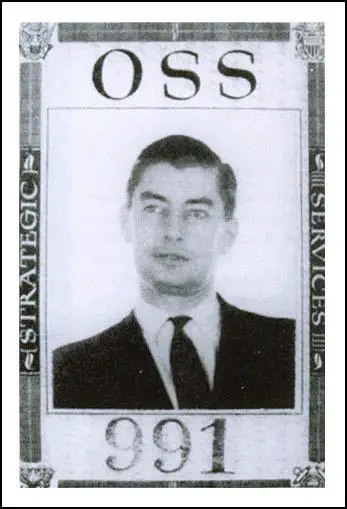
During World War II, Bryce began working for William Stephenson, who was the head of the British Security Coordination (BSC) operating out of New York. The BSC was an offshoot of MI6, which was setup by Winston Churchill to investigate enemy activities, prevent sabotage of any British interests in the Americas, and to positively influence American sentiment towards the British. They used many underhand methods to achieve their goals and Bryce was charged with stirring up trouble between the United States of America and their various Latin American neighbours, initially by using the threat of Nazi infiltration to force specific American policy actions. In Thomas Mahl’s book published in 1998, entitled, “Desperate Deception: British Covert Operations in the United States, 1939-44,” it states:
Bryce worked in the Latin American affairs section of the BSC, which was run by Dickie Coit (known in the office as Coitis Interruptus). Because there was little evidence of the German plot to take over Latin America, Ivar found it difficult to excite Americans about the threat.
To remedy American disinterest in the potential Nazi infiltration of Latin America, Bryce created fake propaganda, which successfully helped to sour relations between the US and Cuba. In his biography, You Only Live Once, Bryce writes about an early operation to undermine the Cuban-American relationship via the creation of a map, which was intended to be given to US Congress as evidence that Cuba was helping the Nazis set up secret bases in their country. Bryce writes:
Sketching out trial maps of the possible changes, on my blotter, I came up with one showing the probable reallocation of territories that would appeal to Berlin. It was very convincing: the more I studied it the more sense it made… were a genuine German map of this kind to be discovered and publicised among… the American Firsters, what a commotion would be caused.
In this instance, the ruse was carried out successfully and became a catalyst for Congress’ decision to dismantle what remained of their neutrality legislation which went on to pave the way for a more acrimonious relationship between the US and their Cuban neighbours. During World War II, Ivar Bryce built a property in Jamaica and his friend, Ian Fleming, who was then the personal assistant to the director of British naval intelligence, Admiral John Godfrey, had decided that he would also live in Jamaica and write full time after the war. In 1945, Bryce helped Fleming find some land and a house outside Oracabessa, with Fleming calling his newly found retreat “Goldeneye” – the name of one of his projects during the war.
In 1950, Ivar Bryce married into the Huntington Hartford family and wed Josephine Huntington Hartford. Like George Huntington Hartford II, his sister, Josephine Bryce, had inherited wealth from their grandfather. Yet, unlike George, she invested it well, concentrating on owning racehorses and becoming very successful in her own right. During the late-1950s, Ivar Bryce, Ian Fleming, and George Huntington Hartford also began producing films together. In April 1953, Fleming had published a novel entitled Casino Royale, which introduced his readers to a British secret agent, serving Queen and country, who went by the name James Bond. The book was successful and soon Fleming began working with Ernest Cuneo to develop scripts for James Bond’s cinematic debut. Cuneo had been an important, if not vital, figure in the operations of the aforementioned BSC during World War II. He also admitted to passing information about American decision-making onto British spies, during a time where the Brits were intent on manipulating US actions. Cuneo stated:
Given the time, the situation, and the mood, it is not surprising however, that BSC also went beyond the legal, the ethical, and the proper. Throughout the neutral Americas, and especially in the U.S., it ran espionage agents, tampered with the mails, tapped telephone, smuggled propaganda into the country, disrupted public gatherings, covertly subsidized newspapers, radios, and organizations, perpetrated forgeries—even palming one off on the President of the United States—violated the aliens registration act [sic], shanghaied sailors numerous times, and possibly murdered one or more persons in this country.
Xanadu or Bust
In April 1959, the film journal Kinematograph Weekly reported that:
Producer Kevin McClory and financier Ivar Bryce, who head Xanadu Productions, are planning to build their own studio in the Bahamas.
The Bahamian government was keen to see a film production company establish itself on one of their 3000 islands. They were quick to offer the company tax cuts and other incentives under their Encouragement of Industry Act to entice Bryce and McClory to invest in the Bahamas. Kevin O’Donovan McClory had originally met Ivar and Josephine Bryce during a visit to their villa on Providence Island in the Bahamas—the villa itself is called Xanadu—to discuss collaborating on a film called “The Boy and the Bridge.” The Sunday Mirror reported on the match in September 1959, stating that:
The upshot was that Bryce went into partnership with Kevin–Bryce’s money and Kevin’s know-how–to make a film.
Also in April 1959, Ian Fleming wrote a letter to McClory concerning potential James Bond movie ideas, with that letter also being used in a 1963 court case between Bryce and McClory after their business relationship eventually broke down. However, in August 1959, McClory and Bryce were still on agreeable terms and were reportedly about to start work on their new studio in the Bahamas.
Basing the production company and much of the development of the James Bond franchise in the Bahamas made sense for many reasons. The Huntington Hartford children had both purchased homes in the Bahamas, with George’s “Paradise Island” being located very close to Ivar and Josephine Bryce’s Xanadu villa. But the main reason for Bond being based in the Bahamas was McClory himself, who claimed that he was responsible for a large part of Ian Flemings novel, Thunderball, being set in the Bahamas. McClory claimed in the previously mentioned 1963 court case that Bryce and Fleming had tried to oust him as the producer of the proposed Bond film. Eventually, like the relationship between McClory and Bryce, the plans to build a studio in the Bahamas began to unravel.
George Huntington Hartford had promised that his redevelopment of Hog Island into “Paradise Island” was to see the creation of a “dignified vacation resort.” In 1960, the New York Times reported that the island at Nassau in the Bahamas was to be a place for “artists and writers, socialites, and diplomats, teachers and scientists, sportsmen and students” in an atmosphere of “cultural enjoyment.” But Huntington Hartford was going to have to work hard to make his Paradise Island vision a reality, especially if he was to attract the right crowd. In November 1962, the project was described as:
The most elaborate resort primping for its first full winter of operation is the $23,000,000 Paradise Island project of Huntington Hartford. Just 15 minutes across Nassau Harbour by special boat, this holiday complex encompasses a French restaurant, a 52-room hotel, lavish tropical gardens, a swimming pool and superb tennis courts.
When the island’s Ocean Club finally opened in 1962, elites jetted in from all over the globe, with over a thousand people reported to have attended Paradise Island’s official launch party. But by March 1964, Huntington Hartford’s island resort was experiencing problems with crime after gunmen held up a group of tourists who were visiting Nassau and on their way to the Paradise Island resort. Four men were reported to have stopped the taxi after ramming it with their vehicle and were said to have stolen the belongings of the taxi’s occupants. At the time, the tourists were travelling back from a night at the Bahamian Club, Nassau’s only gambling casino at the time. The taxi driver also told the police that the bandits all “sounded like Americans.” Even though the robbers managed to get away with only around $1,000 in cash, their haul contained some extremely pricey jewellery—including a diamond ring worth $250,000—and their heist saw them net items totalling in excess of $750,000, which was equivalent to over $7 million in today’s money.
As it was with every other endeavour which Huntington Hartford undertook, he soon became disinterested in his Paradise Island project. By October 1964, his resort was up for sale. The press reported statements by Huntington Hartford’s broker, a man named Johnny Maschio, admitting that the island had never been profitable, blaming the 52-room hotel for limiting the venture’s profitability, saying:
You can’t pay for men like Pancho Gonzales, the island tennis pro, and Gary Player, the golf pro, with 52 paying guests.
The 700-acre property, which Huntington Hartford had originally purchased from a Swedish Industrialist named Dr. Axel Wenner-Gren in 1959, was finally reported to have been sold seven years later. Huntington Hartford didn’t get the $32 million which he originally wanted, with the resort eventually selling for around $14 million instead.
A Man About London Town
Many wealthy elites, such as George Huntington Hartford, had significant and close ties to various members of different national intelligence agencies during this period. Many of these agencies were still evolving in terms of the scope, scale, and style of their operations throughout the 1950s and 1960s. American and British intelligence agencies were not fighting their Soviet foe publicly and, instead of taking certain actions themselves, they were often found utilising front organisations such as the BSC to coerce their allies into making certain decisions.
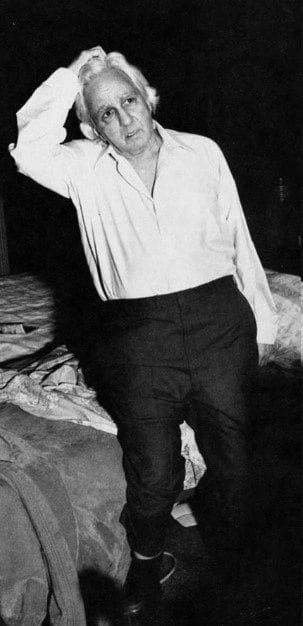
Central to the ideological war between East and West during this era was the battleground of London. The Cold War was rarely fought in the open, and in major capital cities such as London, spies representing all sides were conducting deals in the shadows. This put the night clubs of London on the front lines of an information war, which had the power to sour international relations, or potentially spark wide-reaching international incidents. This era of spy-games was made much more dangerous by the dawning of the nuclear-age, with everyone involved believing in the risk of nuclear warfare, mutually assured destruction, and the potential extinction of life on Earth.
To gain access to sexual encounters with young women and girls, men like Huntington Hartford attended these secretive elite sex parties based in London and exposed themselves in more ways than one. While his vast inherited wealth and his many significant and powerful connections afforded Huntington Hartford some protection, the only benefit that these not-so-private events had for the wealthy billionaire was that they offered him the opportunity to fulfil his carnal desires. However, for the intelligence agents and their associates, these sordid events became a prime place to gather compromising information on powerful people, which could then be used against them later. It shouldn’t surprise anyone that organisers of elite sex parties such as Horace Dibben and George Huntington Hartford II, were useful allies for compromise operations run by the various intelligence agencies, whether they knew it or not. Like Horace Dibben, Huntington Hartford himself gave his companions access to a real underworld of hidden sexual subversion, which many people still think is fantasy.
However, this particular era of sexual compromise operations was coming to an end. The people involved were naive to believe that they could control such a complex blackmail operation indefinitely. Soon, a group of much more serious and sinister predators were slowly surrounding the people who thought they occupied the top of the intelligence food chain. There was a new wave of spies coming to prominence who were active among the melting pots of both London and Washington DC; people such as Tom Corbally were skulking around the American and English capitals and soon would begin to enact the scandal of the decade and bring about the downfall of the British government. Yet, it wasn’t only the British government which these intelligence agents intended to coup—they were also looking over the Atlantic, towards America, and John Fitzgerald Kennedy.
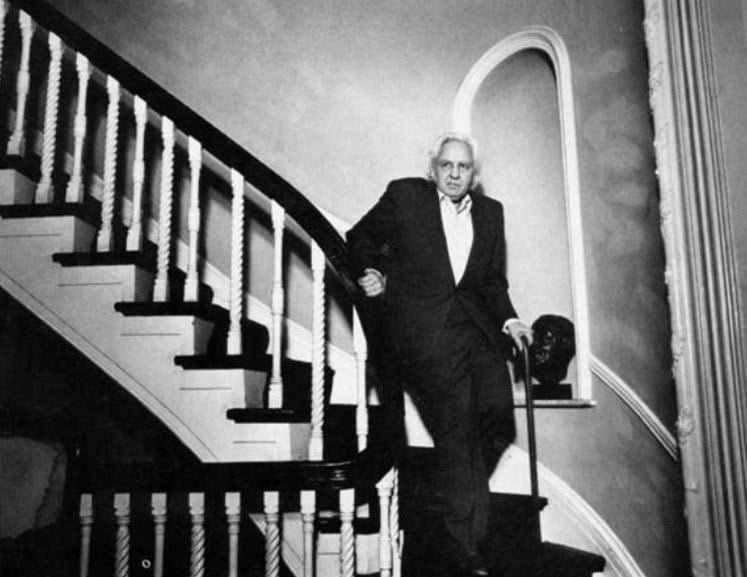
Soon, this investigation will go deep into the actual Profumo Affair and the intelligence linked characters who made it happen. As for George Huntington Hartford, he became a drug addict and lost nearly all his fortune. He spent the last years of his life lamenting his many negative childhood experiences, bed bound and disgruntled. He eventually died in the Bahamas at the age of 97.
